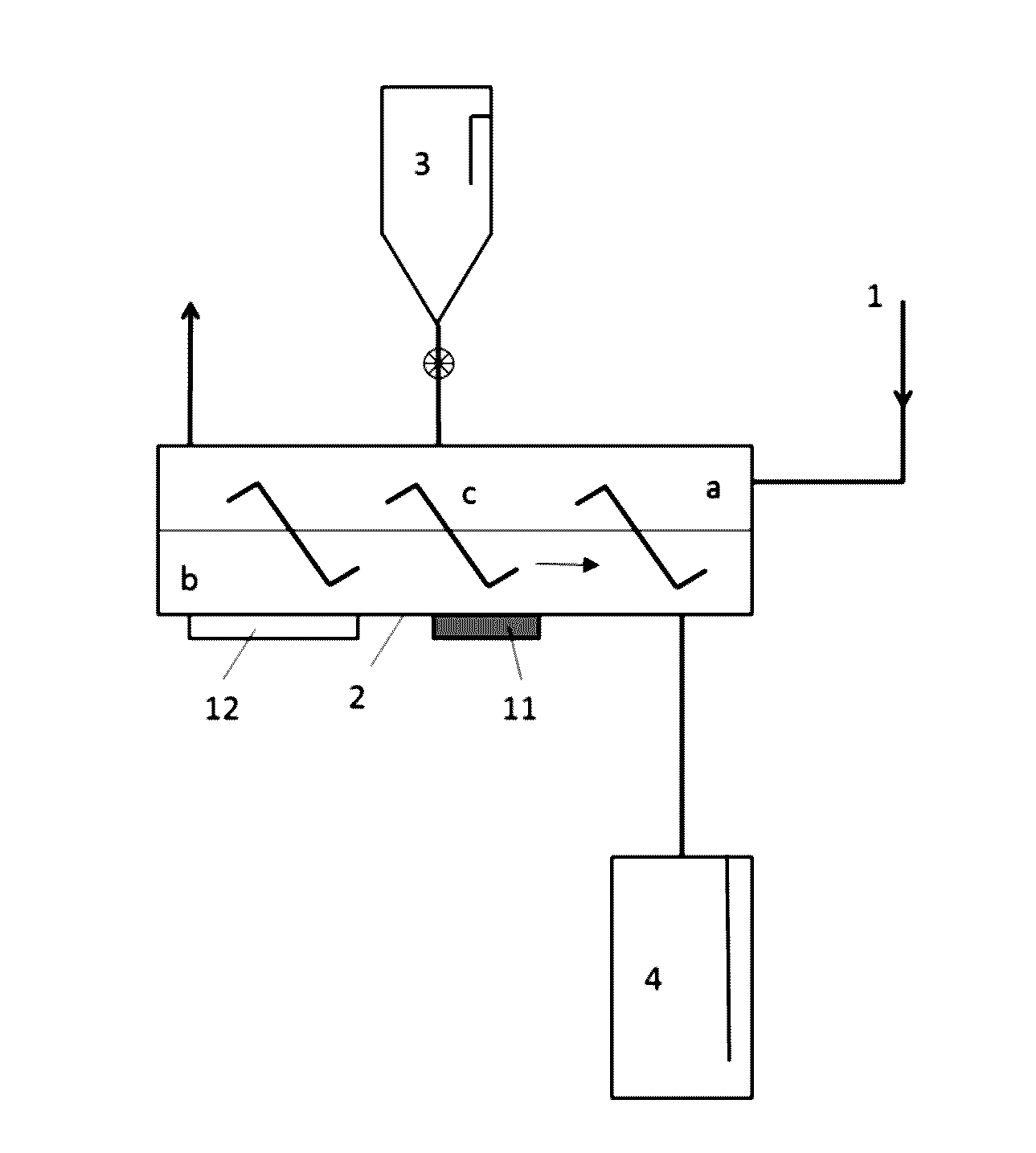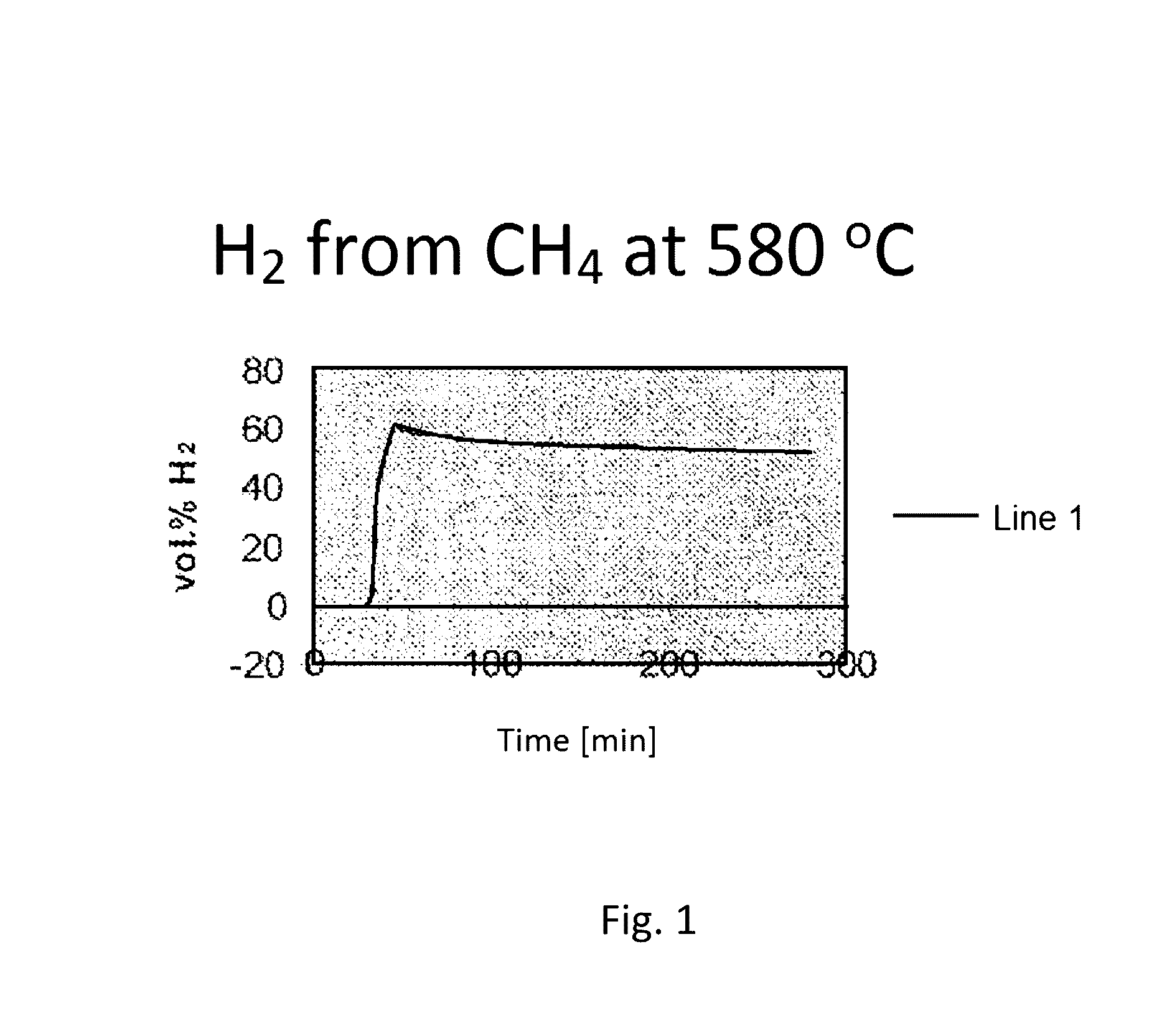Use of a process for hydrogen production
a technology of hydrogen production and process, applied in the direction of gas-gas reaction process, physical/chemical process catalyst, bulk chemical production, etc., can solve the problems of low hydrogen technology, and low hydrogen production efficiency, and achieve the production of hydrogen from fossil energy carriers absolutely clean and efficien
- Summary
- Abstract
- Description
- Claims
- Application Information
AI Technical Summary
Benefits of technology
Problems solved by technology
Method used
Image
Examples
example 1
[0129]Ni(OH)2 was prepared from an aqueous nickel nitrate solution by ammonia precipitation at pH 9. The precipitate was collected in a Buchner funnel, thoroughly washed with deionized water, followed by acetone, and dried at 100° C. for several hours. 4.5 g of the thus prepared Ni(OH)2 powder were suspended in 100 ml acetone under vigorous stirring and then supplemented with 2 ml TEOS (tetraethoxysilane), 5 ml water and 2 ml ammonium hydroxide (25%). The suspension was mechanically stirred overnight so as to ensure that virtually all of the TEOS was homogenously applied as SiO2 on the Ni(OH)2 precipitate. The solid residue was filtered, washed as above, and dried at 120° C. for several hours.
example 2
[0130]200 mg of the composite catalyst were loaded into a ceramic boat, which was inserted into a tubular furnace including a hot zone of 30 cm and equipped with a quartz tube of 40 mm diameter and 1000 mm length. The quartz tube was closed on both ends by suitable closures comprising gas supply and gas outlet means.
[0131]The whole system was flushed with pure methane. After having started heating to the CVD reaction temperature of 620° C., a methane gas flow of 90 ml / min was adjusted. The heating rate was 10° C. per minute, and a constant temperature of 620° C. was maintained for 4 hours. When reaching a temperature of 350° C., an increase in the hydrogen content was observed in the exhaust gas. After 20 minutes, and having reached of the reaction temperature, a hydrogen concentration of 68 vol % was measured in the exhaust gas. During the four-hour test period, the hydrogen concentration dropped continuously, still amounting to 51 vol % at the end. After cooling to room temperatur...
example 3
[0133]A filling station facility according to the present invention will now be explained in more detail with reference to FIG. 4. This schematic illustration depicts an inlet for a hydrocarbon-containing feed gas (a) into a reformer (c). In the reformer, the feed gas is reacted to hydrogen on a catalyst under reaction conditions. In the present embodiment, the reformer (c) comprises a supply and discharge device (cl) for the continuous supply and discharge of the catalyst. The hydrogen-containing exhaust gas of the reformer is facultatively conducted, via an exhaust gas line (j) that is suitable for the transport of hydrogen, i.e. sufficiently tight, both directly and through a steam reformer (d), via a mixing device (k), into a compressor or a cooling device (f). The feed gas injected into the reformer is preferably preheated via a heat exchanger (b1) by the exhaust gas (j) from the reformer, or from the steam reformer. The steam reformer is equipped with a steam inlet (e). The st...
PUM
| Property | Measurement | Unit |
|---|---|---|
| temperatures | aaaaa | aaaaa |
| operating temperatures | aaaaa | aaaaa |
| operating temperatures | aaaaa | aaaaa |
Abstract
Description
Claims
Application Information
 Login to View More
Login to View More - R&D
- Intellectual Property
- Life Sciences
- Materials
- Tech Scout
- Unparalleled Data Quality
- Higher Quality Content
- 60% Fewer Hallucinations
Browse by: Latest US Patents, China's latest patents, Technical Efficacy Thesaurus, Application Domain, Technology Topic, Popular Technical Reports.
© 2025 PatSnap. All rights reserved.Legal|Privacy policy|Modern Slavery Act Transparency Statement|Sitemap|About US| Contact US: help@patsnap.com



